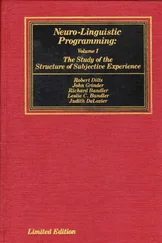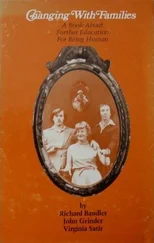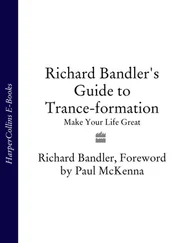Because while your conscious mind has worked diligently during the past three days … to understand something that isn't about it, but about the rest of each of you … your unconscious mind has been collecting information … in the way that it knows how to … and can't avoid… . And you can allow that information …to settle in your unconscious … and you unconsciously know … how to sort through that information … to make changes in yourself … changes that although you may or may not notice them … can be lasting and pervasive.
Now, some of you have not yet made good enough friends … with your unconscious process … and we want you to realize … that your unconscious is not a person … it's a part of you… . It's not a part of you as a piece is a part… . It's a part of you because it works differently … than your conscious mind. Your unconscious, for one thing, is much more lethargic. … It only does things for a purpose… . And the purpose of sorting through the learnings of the Grand Ballroom … is so that your conscious mind … can be surprised delightfully … when it finds itself doing new things … and not knowing exactly how … and especially not why, it is. … And as long as there is a Grand Ballroom, the learnings of the Grand Ballroom will go with you… .
Goodbye.
Appendix I Eye Accessing Cues
While most people lump all of their internal information processing together and call it "thinking," Bandler and Grinder have noted that it can be very useful to divide thinking into the different sensory modalities in which it occurs. When we process information internally, we can do it visually, auditorily, kinesthetically, olfactorily, or gustatorily. As you read the word "circus," you may know what it means by seeing images of circus rings, elephants, or trapeze artists; by hearing carnival music; by feeling excited; or by smelling and tasting popcorn or cotton candy. It is possible to access the meaning of a word in any one, or any combination, of the five sensory channels.

Bandler and Grinder have observed that people move their eyes in systematic directions, depending upon the kind of thinking they are doing. These movements are called eye accessing cues. The chart (left) indicates the kind of processing most people do when moving their eyes in a particular direction. A small percentage of individuals are "reversed," that is, they move their eyes in a mirror image of this chart. Eye accessing cues are discussed in chapter 1 of Frogs into Princes, and an in–depth discussion of how this information can be used appears in Neuro–Linguistic Programming, Volume I.
This chart is easiest to use if you simply superimpose it over someone's face, so that as you see her looking in a particular direction you can also visualize the label for that eye accessing cue.
V r Visual remembered: seeing images of things seen before, in the way they were seen before. Sample questions that usually elicit this kind of processing include: "What color are your mother's eyes?" "What does your coat look like?"
V c Visual constructed: seeing images of things never seen before, or seeing things differently than they were seen before. Questions that usually elicit this kind of processing include: "What would an orange hippopotamus with purple spots look like?" "What would you look like from the other side of the room?"
A r Auditory remembered: remembering sounds heard before. Questions that usually elicit this kind of processing include: "What's the last thing I said?" "What does your alarm clock sound like?"
A c Auditory constructed: hearing sounds not heard before. Questions that tend to elicit this kind of processing include: "What would the sound of clapping turning into the sound of birds
singing sound like?" "What would your name sound like backwards?"
A d Auditory digital: Talking to oneself. Questions that tend to elicit this kind of processing include: "Say something to yourself that you often say to yourself." "Recite the Pledge of Allegiance."
K Kinesthetic: Feeling emotions, tactile sensations (sense of touch), or proprioceptive feelings (feelings of muscle movement). Questions to elicit this kind of processing include: "What does it feel like to be happy?" "What is the feeling of touching a pine cone?" "What does it feel like to run?"
Appendix II
Hypnotic Language Patterns: The Milton–Model
Milton Erickson used language very systematically in his hypnotic work, often in unusual ways. These patterns were first described by Richard Bandler and John Grinder in their book, Patterns of the Hypnotic Techniques of Milton H. Erickson, M.D., Vol. I.
Using this "Milton–Model" is a prerequisite to effective hypnotic communication, and all of the induction examples in this book have used these language patterns. Many readers will unconsciously begin to learn the hypnotic language patterns by reading the many examples of inductions in this book. This appendix makes these patterns more explicit, so that you can practice using one pattern at a time, in order to systematically incorporate them all into your behavior.
I. Inverse Meta–Model Patterns
Often the Milton–Model has been called the reverse of the Meta–Model. The Meta–Model is described fully in The Structure of Magic, Vol. I. by Bandler and Grinder, and there is an excellent 12–page summary of it in an appendix to They Lived Happily Ever After, by Leslie Cameron–Bandler. The Meta–Model is a set of language patterns that can be used to specify experience more fully. In contrast, the Milton–Model provides the user with ways of being "artfully vague." Being artfully vague allows a communicator to make statements that sound specific and yet are general enough to be an adequate pace for the listener's experience, no matter what that is. The Meta–Model provides ways of recovering specific information that is deleted in any sentence; the Milton–Model provides ways of constructing sentences in which almost all specific information is deleted. This requires the listener to fill in the deletions from her own unique internal experience. The Meta–Model can be conveniently divided into three chunks: A. Gathering Information, B. Semantic ill–formedness, and C. Limits of the Speaker's Model.
A. Gathering Information
As part of the Milton–Model, this chunk is called Deleting Information, and is the most useful of the three chunks for hypnotic purposes. The four sub–categories follow.
1) Nominalizations:Nominalizations are words that take the place of a noun in a sentence, but they are not tangible—they cannot be touched, felt, or heard. The test for a nominalization is "Can you put it in a wheelbarrow?" If a word is a noun and it cannot be put in awheelbarrow, it is a nominalization. Words like curiosity, hypnosis, learnings, love, etc. are nominalizations. They are used as nouns, but they are actually process words.
Whenever a nominalization is used, much information is deleted. If I say "Emily has a lot of knowledge" I've deleted what exactly she knows and how she knows it. Nominalizations are very effective in hypnotic inductions because they allow the speaker to be vague and require the listener to search through her experience for the most appropriate meaning. Milton Erickson's inductions are filled with them.
In the following example, the nominalizations are in italics: "I know that you have a certain difficulty in your life that you would like to bring to a satisfactory resolution … and I'm not sure exactly what personal resources you would find most useful in resolving this difficulty, but I do know that your unconscious mind is better able than you to search through your experience for exactly that resource… ."
Читать дальше












